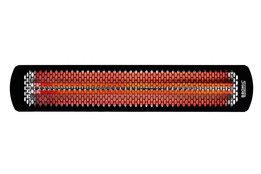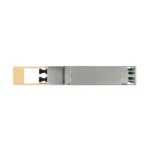When planning to heat an outdoor living area, the biggest mistake people make is underestimating the power required to fight off cool temperatures and breezes. Choosing the right wattage is critical, and for many larger or more exposed spaces, the question isn’t whether you need powerful heat, but exactly how powerful. Before deciding to purchase a large unit, it’s worth considering whether a bromic 6000 watt heater is the essential piece of equipment needed to transform your patio from an occasionally used area into a comfortable, year-round extension of your home or business.
The simple fact is that 6000 watts of electric power delivers a significant amount of heat. This level of output is typically not necessary for a small balcony or a cozy, enclosed porch. However, the size and exposure of your space are the two most important variables when calculating your heat requirements. If your area is large, open to the elements, or has very high ceilings (like a vaulted veranda or a commercial covered terrace), a lower wattage heater simply won’t cut it. Trying to heat a large space with an underpowered unit often means you run the heater constantly without ever achieving real comfort, ultimately leading to wasted energy and disappointment.
Determining the Right Heat Bloom
Understanding the coverage area, often called the “heat bloom,” is key to proper sizing. A top-tier heater is designed to cast a specific footprint of warmth. For a unit of this capacity, the area of maximum comfort is quite extensive, often spanning 100 to 120 square feet, depending on mounting height and wind conditions. This large coverage is why a bromic tungsten 6000w heater is often the go-to solution for challenging outdoor environments. Think of large restaurant patios where you need to guarantee comfort for multiple tables simultaneously, or spacious residential decks where furniture is spread across a wide area.
Installing several smaller heaters to achieve the same coverage as one high-wattage unit can sometimes be less efficient, more complex, and costlier. Each heater requires separate mounting hardware and, more importantly, its own wiring circuit. By consolidating the power into a single, high-output heater, you can often simplify the electrical work and installation process. This consolidation not only provides a cleaner aesthetic but ensures uniform heating across the entire zone. When you need that massive, dependable throw of heat, a unit like this provides it without compromise.
The Role of Exposure and Temperature Drop
The location of your property plays a massive role in heat requirement. If you live in an area that experiences significant temperature drops once the sun sets, or if your patio is on a high-rise balcony exposed to relentless wind, the ambient temperature drop can negate the output of smaller heaters almost instantly. The high wattage of a bromic 6000 watt heater provides the necessary thermal reserve to cut through cool air and maintain a consistent, comfortable temperature for guests. It’s the difference between merely taking the chill off and actually making the space feel genuinely warm and inviting.
Consider the electrical requirements as well. A 6000-watt heater typically requires dedicated 240-volt wiring and a high-amperage circuit. This isn’t a simple plug-in device. While this adds complexity to the initial installation, it’s a non-negotiable step for high-performance heating. Always consult a certified electrician to ensure your home or business can safely accommodate the power demands of a high-output unit. When you choose a heater of this caliber, you are choosing a permanent, reliable, and high-performance climate control system for your outdoor space.
When to Consider Lower Wattage Options
Despite the undeniable power and benefit of a 6000-watt unit, it’s not the answer for every space. For smaller patios, covered balconies that are less than 8 feet wide, or semi-enclosed areas that retain heat well, a 3000-watt or 4000-watt heater is usually more than sufficient. Overheating a small space is just as much an issue as underheating a large one; it’s uncomfortable and wastes energy. It’s about finding the balance.
To figure out exactly what your space needs, a simple calculation can help. Measure the area in square feet and note the minimum temperature you expect to heat the space in. For exposed areas, you generally need 10 to 15 watts per square foot. For wind-protected or semi-enclosed areas, you might only need 7 to 9 watts per square foot. If your calculations point toward needing 4,500 watts or more, moving up to the 6000-watt capacity is a sensible investment that guarantees performance, providing a reliable and expansive heat bloom that truly extends your outdoor living season.

